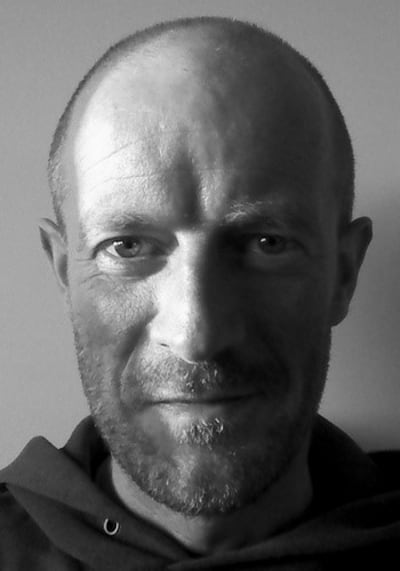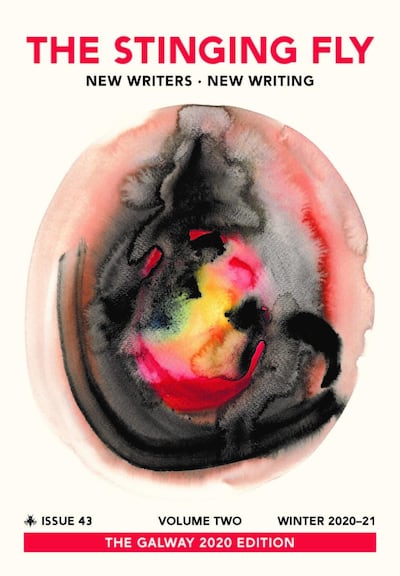In Eilís Dillon’s novel The Bitter Glass, set in west Co Galway during the Irish Civil War, there is a line of dialogue that is quietly extraordinary in showing some of the turns the English language has taken in Ireland: “Wasn’t it herself told me ye were coming today . . .”
Few Irish people would bat an eyelid at this – or pause to deconstruct it, such is the story’s momentum. And it borders on cryptic for readers uninitiated in Irish English dialect; certainly its nuances and cadences are likely to be lost en route. So humour me while I marvel at some of its features.
1. Herself as an unbound reflexive pronoun – not bound to a she before it, as in standardised English. This use of herself is not just grammatically unusual: it connotes familiarity and respect, so it doesn't simply replace she, her, or she herself. In Ireland's historical shift from Irish to English, the fact that the rhythm of sí féin was preserved in herself may have motivated its unbound use.
2. Clefting for topicalisation. When we say things like It's inside they are, instead of the more linear They're inside, we unconsciously extract an element, move it to the front after a dummy it, and put the rest in a subordinate clause. This highlights the element and gives the line a distinctive rhythm. Clefting is not unique to Irish English, but we are particularly fond of it.
3. Ye as second person plural. An array of ye and youse forms are so established in Irish English that we inflect and affix them in every imaginable way: yeers, yeez'd, youse'll, yehs've, yizzer – all prompting red squiggles in my word processor till I put smacht on its dictionary. Ye is favoured in the west: 'Did ye practise yere piano pieces?' writes Mary Costello in her story You Fill Up My Senses.
4. Subject contact clause. The relative pronoun (who or that) that we expect before told me is dropped, strengthening the colloquial effect. This is an old pattern that persists in regional dialects. 'There was a young doctor in the hospital asked me did I need a tranquilliser,' Mary Beckett writes in A Belfast Woman. (She also Irishly inverts the embedded question: asked me did I need, not asked me if/whether I needed.)
We can repeat the omission, telescoping the syntax. Kevin Barry does this in City of Bohane: “Was it Dick had the daughter married the fella of the Delaceys?” This may sound as Irish as it gets, but it occurs also in Australian, African American, and Canadian English varieties. Margaret Atwood has a character in Polarities say, “there’s another boy wants it says he’ll paint it himself”. Dialects converge and cross-pollinate; it’s in their combined features that we discern their special flavour.
People do language much as finches fly or trees leaf: it’s in our nature. Talking is an expression of our identity as complex creatures with ideas, emotions, memories and attachments. It reveals aspects not just of our personality but of places we’ve spent time in and people we’ve spent it with. We use language not just to communicate information but to express emotion, entertain and persuade people, show our individuality, negotiate social status, and maintain relations. This is all true of sign languages too, but the focus here is on speech.
Language won’t develop in a social vacuum. It emerges in a group and comes to signal our identity as part of that group. In childhood we learn to talk like those around us, but in a unique way: an idiolect. Zoom out and we find a dialect – the variety of language spoken by a community, generally defined geographically or socially. Dialect includes grammar, vocabulary, accent and usage.
Picture a line across Ireland from Sligo through Leitrim and Cavan over to Louth. Below it, for most people, scone rhymes with phone; above it, with gone. Near the line, usage is more mixed. The line is an isogloss, like a weather-map isobar but showing where a linguistic feature stops or changes. There's one along the old Iron Curtain: in what was West Germany a pancake is a Pfannkuchen; east, it's an Eierkuchen (egg cake). A bundle of isoglosses together marks a rough dialect boundary, but it's seldom tidy. Dialects bleed into one another, complicated by geography, politics, and human interaction.
I grew up in Mayo with a Galway address. It was an early lesson in natural borders: my local post office was over the bridge. As an island Ireland has never been especially isolated, though, and many trademark features of our dialect show up elsewhere. Some came from Irish before being exported; some we borrowed from Scots or regional English. “Faith, and I’ll send him packing,” Shakespeare wrote in Henry IV, Part 1, “Myself, he and my sister” in The Comedy of Errors. Irish English is a complicated mosaic of influences, not all of them obvious.

For its size, Ireland has rich dialectal diversity. Listen to speakers from Dublin, Cavan, Donegal, Antrim, Mayo, Limerick, Waterford, and Westmeath and you’ll hear a wealth of contrast; even neighbouring dialects, like Cork and Kerry, can diverge to the point of caricature. Some people say they can distinguish between accents from either end of a village or parish, Henry Higgins-style. Generalisation becomes necessary, but it can overshoot. In 2014, when YouGov asked British people what accents they found attractive, “Southern Irish” topped the poll. To anyone in Ireland, that phrase will seem hopelessly vague.
Geography offers a useful analogy. Different regions of Ireland have distinctive landscapes, yet it makes sense sometimes to refer to “the Irish landscape”: it has unifying traits. Similarly there is merit to the idea of Irish English as a dialect. Any local dialect on the island will have properties that mark it as Irish English, though their frequency and proportion will vary from one place or speaker to the next.
So it is with Galway. Its dialects are close to those spoken anywhere west of the Shannon, where Irish lingered longer and had more effect on the English that largely, and violently, supplanted it. But the county’s size and topographical range mean there are considerable differences in local speech as we travel from the towns and farmlands of the east – virtually the midlands – through the city and westward to Connemara and the islands, where in many households Irish prevails.
Contact between languages is a driving force in language change. From the early 17th century “many Irish speakers began to communicate with English speakers by grafting English words and structures onto the stem of their Celtic language”, Loreto Todd writes in Green English. In this way there emerged “a form of English that reflected Irish influence at every linguistic level” – sound, syntax, rhythm, idiom, vocabulary. Galway’s Gaeltacht and distance from Dublin and Ulster meant that influence was relatively strong here.
Irish is the source, for example, of the after-perfect, which uses after to form the perfect tense, usually in reporting something recent and of high informational value – hence its other name, the hot news perfect. Since Irish lacks a verb for have, a literal translation of the perfect tense ("I have eaten") was not possible, so we transposed Irish phrases like tar éis and i ndiaidh to form "I'm after eating".
PW Joyce, in English As We Speak It In Ireland, said the after-perfect is “universal in Ireland” but that English people would not understand it. Modern research confirms its ambiguity. One study asked Irish English and British English speakers the meaning of the line I’m after getting a cup of tea. Nearly all the Irish understood it as “just got a cup”; most of the British interpreted it as a wish for tea.
What we did with habitual aspect is equally striking. The distinction between tá mé, "I am", and bíonn mé, "I (habitually) am", was so integral to native expression that our ancestors remoulded English multiple times to retain it, perhaps helped by convergence with Scots and English dialects. There is do be ("The people do be full of stories of all the cures she did" – Lady Gregory), do by itself ("I'm not so old as you do hear them say" – JM Synge), and the northern be's ("But sure plenty dogs be's that way" – Robert Bernen). Quintessentially Irish structures, but you'll also hear them in Newfoundland, an imprint of emigration.
The Irish relationship with time shows a contrary pliability: saying you'll be ready in five minutes is like a tease for philosophers. This warp has entered our idiom. When we say someone is here with years, we create a hyper-extended present tense. Never, meanwhile, can have radically short time reference: She never rang yesterday evening. This line, used in Raymond Hickey's Survey of Irish English Usage, was accepted most in Galway.
Grammatically we do many things differently. We can use them as a demonstrative pronoun (She loves them dogs), drop to after verbs that normally mandate it (I used allow them stay), and make generous use of the definite article: We do have the chats. We'd be fierce fond of the conditional, by which I mean we are. Thanks to Irish, we do quare things with prepositions: Is it yourself that's in it? That dog has the garden destroyed on me.
We have something called the statal or resultative perfect, a widespread but little-noticed feature: You've it ruined in place of You've ruined it. This can be useful semantically: Hickey notes that Have you read Ulysses? means "Have you ever read Ulysses?", while Have you Ulysses read? means "Have you finished reading Ulysses?"
Irish manifests in Irish English more obviously through words adopted for their particular meaning, style, or connotations: acushla, amadán, asthore, boreen, céilí, colleen, cruiskeen, culchie, dudeen, fooster, glug, gob, gom, kreel, mallafooster, mavourneen, meas, pishogue, plámás, pus, skelp, sleeveen, smacht, spalpeen. Other loanwords have archaic English or Germanic origins, such as crack, hames, yoke, and delph, from the name of a Dutch town.
The suffix -een, from Irish -ín, is highly productive and has been smuggled into standardised English through the likes of poteen, shebeen, and smithereens. The few Gaelic loanwords to join it there tend to have their spelling codified: banshee, brogue, clan, drumlin, galore, shamrock, tory, sometimes with small variation: whiskey/whisky. For other words, the options can be prodigious: the sceptical interjection mar dhea has been anglicised as moryah, maryeah, mara-ya, maureeyah, moya, muryaa, etc. Beoir (beure, buor, etc.) is unusual in coming from Shelta, Travellers' argot.
Irish expressions that were habitual among older, agricultural generations can lose favour among the city-based youth, dropped with the customs and contexts that carried them. Some regret the gradual swing from rural idiom with its deep Irish symbiosis towards a more homogeneous variety. But people may lose their ancestral tongue "yet cling to its patterning for centuries", Loreto Todd has written. The channel stays open in both directions, allowing for translingual mixing like the marvellous ráiméising – found in both literature (Lisa McInerney's The Blood Miracles, for one) and Dáil debates.
Irish English abounds in these signature terms in every grammatical category. Take its adjectives, many of which convey broken, drunken, exhausted, or other subpar states: arseways, banjaxed, bockety, buckled, fluthered, killed, ossified, polluted, thick, wrecked. Class, grand, and mighty buck the trend, while pure and fierce can intensify anything, producing such improbable combinations as fierce gentle and pure filth.
Idioms are often counterintuitive, especially when they hinge on irony: Would you stop, go away outta that. Much depends on shared understanding, and a phrase can flip from warm to withering with the slightest inflection: I will, yeah is seldom to be taken at face value. Sham, in the west, is not the negative word it is elsewhere but a friendly term of address.
Another such term, horse, is for people known well, horsebox doubly so. If you know someone genealogically, you know the seed and breed of them. These and other phrases, like Shtall the digger and How's she cuttin'?, are echoes of farming in our vernacular. This need for expressive colour is a counterbalance to the efficiency that often drives language change. Why say Listen when you can say C'mere till I tell ya, or No when you can say Musha indeed now and I am not.
Musha (from Irish muise), like its cousins wisha, arrah, erra, and yerra, and some special uses of now, so, sure, then, and well, are what linguists call pragmatic or discourse markers (or even discourse-pragmatic markers). These words, which show great geographical variety, help us manage and frame our conversations. Sometimes only a Sure lookit or an Arrah now will do, with their lifetimes of accumulated implication.
Dialects regularly incur scorn, being a convenient proxy for racism, classism, xenophobia and other prejudices. The shame can be internalised. Centuries after Jonathan Swift sneered at the "odious sounds" of people around Galway, children in one village school in the west who wrote do be or I done it had the offending text cut from their copybooks with a scissors and were made to bury it outside in a hole in the ground. Digital technologies with their normative algorithms – voice assistants stumped by local accents, interfaces that reject diacritics like the síneadh fada – fuel the myth that nonstandard dialects are substandard or unworthy.
Usage snobs believe standardised English to be the most correct and logical dialect. This kind of seafóid stems from linguistic ignorance and unexamined ideology. Dialects differ in their global utility, but none is ultimately more logical or valid than any other: each serves its users' needs. The prestige of standardised English comes not from linguistic virtue but from historical happenstance and the power concentrated by the rise of print, wealth and imperialism.
Amn't is a fun counterexample. Because it's more logical than aren't – amn't I right? – children often produce it naturally till they're taught otherwise. For an Irish person the difference between amn't and aren't, trivial on the face of it, can conjure a legacy of stigma and alienation. Eavan Boland, in An Irish Childhood in England: 1951, wrote of leaving her homeland at six years old,
when all of England to an Irish child
was nothing more than what you'd lost and how:
was the teacher in the London convent who,
when I produced 'I amn't' in the classroom
turned and said – 'You're not in Ireland now.'
Accents are the most conspicuous part of a dialect, and how we perceive them can be highly subjective. The Galway accent is "a posh Mayo one" according to someone I know; it's the other way around according to another. Accents differ especially in their vowels, and Irish English vowels draw heavily on Irish Gaelic ones. And we don't just alter them: we can add them to words like girl and film and remove them from words like poem and general.
In some cases it's a throwback. Pronouncing -ea- as -ae- (as in "too clane to be dacent", in Alice Taylor's Quench the Lamp) is a Middle English practice conserved in some Irish English dialects. This pronunciation, preserved in names like Yeats and Keane (in the west but not the south), was once mainstream but now marks regional speech or is used to affect a rustic manner.
This is something we commonly do, code-switching for effect: old one becomes "oul wan", poisoned "pizened". We say there's atin' and dhrinkin' in Guinness because eating and drinking is too prim for the role we're performing. A Galway friend tells me I seent it ("I saw it") is used by youngflas aping older generations to take the piss or "exaggerate how Galway they are". All speakers of Irish English, Raymond Hickey observes, "know what features can be donned to impart a popular touch".

Come Sahurday you’d right to head wesht, take a gandher at the Bens where you’ve not been with yonks. Let you round up the feens and d’care but ye’d have mighty divilment with a gang in it and a hape o’ hang sangwiches - you made a hames of the last plan and they givin’ out yards since. If the weather is cat sure what harm, gallivanting up them hills you’d be like Lord Muck.
Robert Lloyd Praeger, in The Way That I Went, describes the rural west as a magic region “to which one’s errant thoughts recurrently stray, and which remains a lodestar to people of many lands”. This grows truer with each year’s passing and its influx of people and languages. But still every field and hill has an old name that fastens the land to our mental maps, though the names can wither with time or translation: “Irish placenames,” wrote Tim Robinson, “dry out when anglicized, like twigs snapped off from a tree.” The roots, to endure, need tending.
Galway city, bustling hub and passageway, continues to be a vital conduit between west and east and a centre of gravity for stories and histories from settlers and visitors from all directions. Galway's dialects, like Irish Englishes generally, are vigorous, mutable, and many-sided and will no more stay still than the salmon leaping up Aasleagh Falls or the Corrib rushing under Wolfe Tone Bridge.
This essay is abridged from the text published in The Stinging Fly, winter 2020-21. Stan Carey is an editor and writer from the west of Ireland. He writes a column on language for Macmillan Dictionary and has also written for the Stinging Fly, the Guardian, History Today, Merriam-Webster and others. You can find him at stancarey.com or @StanCarey













